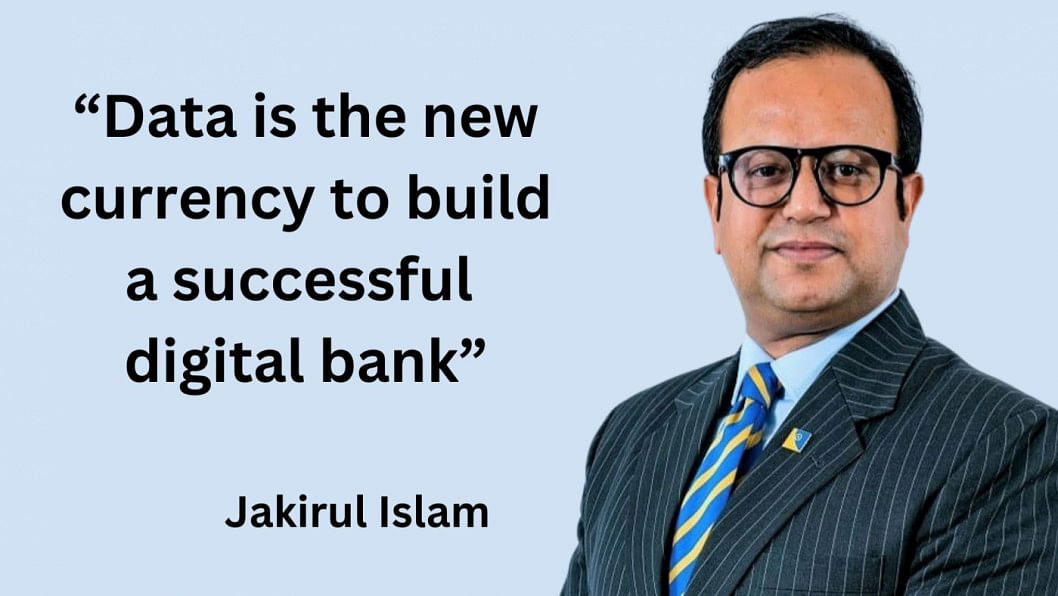Nine building blocks for a future-proof digital bank

Bangladesh Bank has recently given its nod to eight applications out of 52 to introduce digital banks.
Nagad Digital Bank PLC and Kori Digital Bank PLC have already received letters of intent (LOIs) from the central bank as a formal go-ahead for their digital banking operations.
Three bank-led applications -- bKash Digital Bank by Brac Bank, digitALL by Bank Asia and Digi10 by a consortium of 10 private commercial banks -- have been selected by the central bank to form digital banking windows.
In addition, the banking regulator will issue LOIs to three other shortlisted candidates after reviewing the performance of Nagad and Kori over the next six months.
Initially, Malaysia and Pakistan have given five digital bank licences each and Philippines six.
After Pakistan, Bangladesh is the second country in South Asia to approve licences for digital banks.
There are some key aspects which we shall take care of at the time of establishing digital banks. They are:
1) Being customer centric is a critical enabler towards success
There is a saying that digital banks work on the philosophy of "the first impression is the last". The customer onboarding process is the first and crucial phase for making a relationship with a user.
So, it is mandatory to make the onboarding process efficient and easy for the user. Digital banks across the world have disrupted conventional banking models by providing an enhanced user experience through innovative UIUX design. From simple registration forms to personalised welcome messages and video tutorials -- every feature of the onboarding experience should be designed with the user in mind.
2) Promote the implementation of emerging technologies
Implementation and adoption of emerging technologies transform an organisation into a future-ready business. It allows banks and financial institutions to acclimatise services for customers on-demand by challenging existing legacy systems. Digital banks across regions are using blockchain technology, artificial intelligence, robotics process automation, clouds, and alternative credit scoring engine for greater customer satisfaction over convenience, cost and mitigation of risk.
3) Practice a truly data driven culture through data strategy and governance
Big data analytics is essential for addressing imperative banking requirements in the areas of customer segmentation, custom-made product offerings, reporting for AML/CFT and other fraud detection. For maximum use of the power of data, banks and financial institutions should invest in scalable and efficient infrastructures that facilitate real-time accumulation of data and universal access to data.
4) Adopt a digital leadership across the institution
A 'Digital First' approach needs to start at the top of the hierarchy, at the board level and then should trickle down through the organisation. For any digital transformation, it entails buy-in from the team of the top management. It also needs the acceptance of employees, partners and clients. These days, leaders have to be generalists and specialists at the same time.
5) Build and engage a team with right skillsets to drive innovation
To cope with changing times, banks are adopting a 'digital first' new business model or updating their legacy systems through a more innovative and technology-based approach towards better customer experience. However, investment in new technologies is not sufficient to fully achieve efficiency if the workforce is stuck in the analogue world. Now-a-days, it has become a necessity to confirm that the banking workforce is equipped enough to take the 'digital first' approach.
6) Possess institutional focus in financial inclusion
Ensuring quick access to the market and finance for the CMSMEs and micro-borrowers seems to be the key objective of digital banks in Bangladesh. Digital banks primarily should focus on developing an ecosystem where the banks work together with different service providers and market actors to create all-inclusive platforms for the target segments from the unbanked and underserved population. Though the existing banks and MFS providers have built an ecosystem for digital payments, digital lending and digital savings market is still untapped.
7) Prioritise cross-industry collaboration for a quick win and long-term sustainability
Digital banks need to be very cautious about making partnerships and leveraging their networks and customers. If they want to do it gradually, it is going to be a costly proposition. Bank-telco and bank-MFI-fintech partnerships seem to be an ideal for a quick win in market expansion and customer acquisition. Bangladesh Bank received a number of digital bank applications with the proposed consortium of bank, telco, MFI, fintech, MFS provider and FMCG business houses.
8) Follow proven track record to engage the target audience
For few MFS and agent banking service providers over the past five years, they have been laying the foundation and building the essential blocks for digital banks. In fact, one of the pioneering agent banking providers, Bank Asia coined the idea of digital bank to the central bank for the first time in 2020 during the covid pandemic. Country's leading MFS provider bKash not only made its AI-based nano lending scalable but also maintained a healthy single-digit non-performing-loan (NPL) rate. Hence for few contenders, digital bank venture is not a greenfield, but more of a brownfield venture.
9) Create an inclusive regulatory environment to leverage established ecosystem and infrastructure
Prosperous digital banks will leverage their respective ecosystems. Existing MFS players like bKash and Nagad will have a relatively low customer acquisition cost. These wallet providers will also ride on their existing ready digital payment ecosystem. Digital bank contenders like Bank Asia and Dutch-Bangla Bank pioneered agent banking, which is another prominent DFS channel to be leveraged for digital banking. A number of MFIs are about to join the digital bank consortium.
Digital banks in Bangladesh will be running with a view to serving the financially unbanked and underserved population with insufficient credit history. Tech-savvy millennials and Gen Z will be the key target segments for a quick adoption. Thus, one of the prime challenges to be addressed around profitability by serving the thin-file customers.
To be successful, digital banks must address the needs of these untapped low-moderate-income segments by capturing the alternate sources of data. To address our growing realisation for data there is a quote of prolific British science fiction writer Sir Arthur Conan Doyle: "Data! Data Data! I can't make bricks without clay!".
So, data is the new currency to build a successful digital bank.
The author is a market transformation professional and a senior vice president of Brac Bank PLC.

 For all latest news, follow The Daily Star's Google News channel.
For all latest news, follow The Daily Star's Google News channel. 








Comments